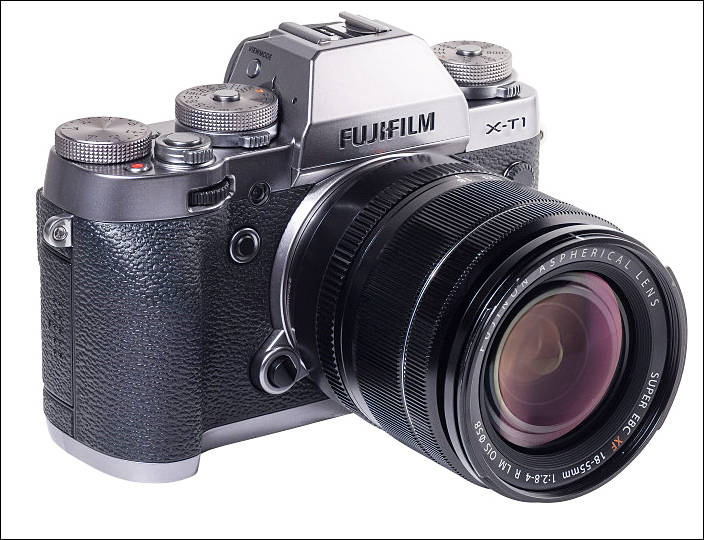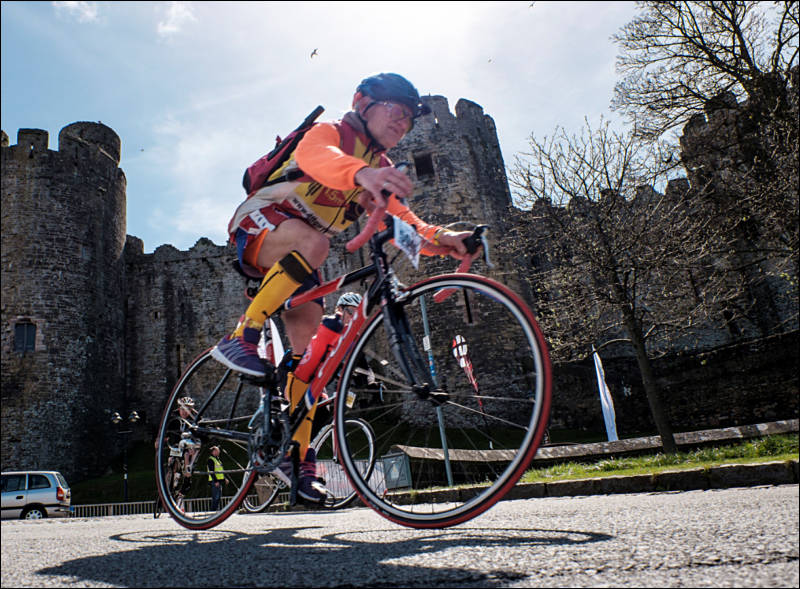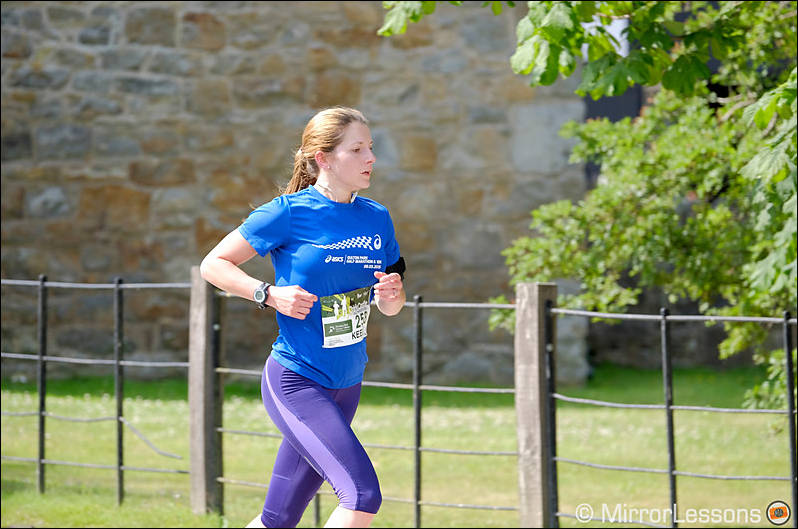
It allows to keep PV going, with more focus towards AI, but keeping be one of the few truly independent places.
-

Video sample - http://www.ixbt.com/digimage/fuji/x-t1/video/vid-2.mov

 gopro6.jpg800 x 546 - 65K
gopro6.jpg800 x 546 - 65K -
Hi, I am sure that everyone is aware of the latest firmware coming in Dec, and that it has 2 interesting upgrades to video performance.
"Video frame rate selection - In addition to the existing 60fps and 30fps selections, 50fps and 25fps, as well as a 24fps selection will become available to users. 50fps and 25fps allow video editing in the PAL region, such as Europe and elsewhere, without converting the frame rate. The 24fps will offer movie-like video capture and play back"
"Video manual shooting – Users will be able to select ISO sensitivity prior to shooting videos, as well as adjusting the aperture and shutter speed during video shooting."
-
In light of my above post, this raises an intersting question. In my opinion the main issue with the Fuji X-T1 for video is the lack of manual control of shutter speed and 24p/25p this is now resolved by the above. Great.
The other massive issue is that the footage is prone to aliasing. Thing is I think they could fix this in the firmware as well. But I wanted to confirm my thinking with you guys as you are far more switched on that me.
Apparently the beauty of the X-trans sensor is that because of its RGB layout you don't require an anti alias filter because the sensor naturally does not have and Aliasing...........
So why aliasing in video? my conclusion (and if flawed please call it out) is that the aliasing is from downsampling the sensor, either because they have to because it too big i.e 16MPeg APS-C or because the H.264 codec they are using is too small, or probably a combination of both.
So if they a) Implemented 1-1 sampling of the sensor (possibly introducing a crop, but this would probably still be better than a 4/3s crop b) Implemented a better codec AVCHD (not sure if they can or if its cost effective as its propriety to Sony/Panasonic) or I guess something else.
Would that get rid of or diminish aliasing.
The final thing thinking about it that they would need to do is implement a way of 16/9 framing so that you could actually compose properly, there are workarounds, but it would be great if you could set up one of the custom buttons to switch to this view.
So does any of this make sense, as if it does I might put it in as a feature request to Fuji as them seem quite open to user feedback.
Appreciate everyones patience if I am barking up the wrong tree.
-
PPS they have also implemented UHS-ii for sd cards which will help with FPS, but also makes me wander if they have plans for higher bitrate video?
-
PPS they have also implemented UHS-ii for sd cards which will help with FPS, but also makes me wander if they have plans for higher bitrate video?
No one knows this except them :-)
-
Thanks for replying Vitaliy, I had a Gh1 for the last 4 years and loved the hack
The post above the bit about downsampling, does that sound like a logical assumption or am I tilting at windmills. I just have the feeling that the X-trans could be a great video sensor because of the lack of aliasing but its being let down by poor codec implementation.
I know you should never buy a camera in the hope of firmware being added or a hack being forthcoming and I won't, but I would be slightly gutted if I went with the X-E2 as its cheaper and then the X-t1 turns out to become a video monster :)
G
-
Firmware v3.0 will be available for download on December 18 .
- AF (Auto Focus) Area direct selection – Users can select the focus area with the 4-way controller, without pressing the Fn Button.
- Function replacement for the AE-L/AF-L buttons – The currently locked AE-L/AF-L button function will now be interchangeable, depending on the user’s preference.
- Focus Area size variability during MF (Manual Focus) – Users will be able to change the focus area in Manual mode during One Push AF with the AF-L button.
- Macro Mode direct selection – Users will be able to directly turn ON or OFF the Macro function in Auto Focus mode to expand the distance measurement range to the short-distance range. This will be possible without accessing the pop-up menu screen.
- Q Menu customization – The update will render the items and layout of the Q Menu, used for quick access of frequently-used items, changeable to the user’s preference.
- Video frame rate selection – In addition to the existing 60fps and 30fps selections, 50fps and 25fps, as well as a 24fps selection will become available to users. 50fps and 25fps allow video editing in the PAL region, such as Europe and elsewhere, without converting the frame rate. The 24fps will offer movie-like video capture and play back.
- Video manual shooting – Users will be able to select ISO sensitivity prior to shooting videos, as well as adjusting the aperture and shutter speed during video shooting.
- Phase Detection AF support for One Push AF – With One Push AF, operated by pressing the AF-L button during manual focusing, the update will enable Phase Detection AF with quicker focusing speeds.
- Metering area focus area interlocking – The update will enable users to interlock the AF area position with the metering area when spot metering is selected.
- Expansion of the Program Shift setting area – The update will enable the current Program Shift, in which the low-speed side is 1/4 second, to be shifted to a maximum of 4 seconds.
- Electronic Shutter – Adds electronic shutter function to original X-T1 Black bodies with a maximum shutter speed of 1/32000 second.
- “Classic Chrome” Film Simulation – Film simulation that delivers muted tones and deep color reproduction.
- Support for INSTAX Share Printer – Photos can be sent directly to the INSTAX Share Printer for instant prints.
- Lock Function – Users can lock the camera to prevent unexpected dial and button operations.
- AF+MF Setting – Users can half press the shutter to autofocus, and then make fine adjustments using the manual focus ring.
- Three Custom White Balance options – Expands number of white balance users can store.
- Expanded EVF/LCD display types in Manual Exposure Mode – Users can now customize the way the image is displayed on the EVF or LCD.
- LCD Brightness and EVF/LCD Adjustment Control – Users can customize display brightness based on environment.
- Flash Compensation in Fn Button Setting – Users can now add Flash Compensation to any of the six custom function buttons.
-

 came-8000-8.jpg800 x 647 - 70K
came-8000-8.jpg800 x 647 - 70K -

The Fujifilm X-T1 Graphite Silver can record full HD 1080p movies at 60/30fps with stereo sound and a high bitrate (36Mbps), with the option for turning this mode on curiously buried at the bottom of the Drive menu, although at least Fujifilm have finally added a one-touch record button. It's fair to say that the X-T1 Graphite Silver's movie mode isn't overly advanced. You can set the aperture and shutter speed before recording begins, but not during, and you can also set the Film Simulation mode, so black and white footage is possible, and the exposure compensation.
http://www.photographyblog.com/reviews/fujifilm_x_t1_graphite_silver_review/

 premium4.jpg800 x 514 - 67K
premium4.jpg800 x 514 - 67K -
New firmware is available V3.0
http://www.fujifilm.com/support/digital_cameras/software/firmware/x/xt1/index.html
-

This camera is also the first in my opinion that truly gives us a glimpse of the future with the capabilities of its electronic viewfinder (EVF). Their implementation of the EVF is simply brilliant. It is bright, sharp, big and allows all shooting data to be displayed. When manual focusing, you have the smaller magnified window that appears. Using that in combination with focus peaking, makes getting sharp manually focused images a breeze. And, when you rotate the camera to vertical, the data in the viewfinder changes to vertical orientation too. There's a lot to like about EVFs.
http://www.luminous-landscape.com/essays/cameras/living_with_the_fuji_x_t1.shtml

 various10.jpg648 x 506 - 61K
various10.jpg648 x 506 - 61K -

 came-mini24.jpg800 x 499 - 75K
came-mini24.jpg800 x 499 - 75K -
v3.10 firmware for the X-T1:
- Improvement of the flash function when "MECHANICAL+ELECTRONIC" is selected. An external non-TTL flash will fire when the "MECHANICAL+ELECTRONIC" is selected in the "SHUTTER TYPE" option of the SHOOTING MENU. If "S (Shutter-Priority)" or "M (Manual Exposure)" mode is selected, set the shutter speed to 1/180 sec. or slower.
- Improvement of the Wi-Fi function when "FUJIFILM PC AutoSave" is used. The phenomenon is fixed that Wi-Fi communication with "FUJIFILM PC AutoSave" stops at the moment the LCD turns off.
- Improvement of the display for the "USB MODE" in the SET-UP menu.
- When "PC SHOOT FIXED" is selected, the warning of "IMAGES ARE NOT SAVED IN THE CARD" appears.
- In case that "PC SHOOT FIXED" is selected in the "USB MODE" and the camera is not connected to a PC via a USB cable, you cannot turn off the camera when you turn the ON/OFF switch to the OFF position or remove the lens from the camera because the camera stays in the waiting mode for image transfer. With this upgrade, the message 'Waiting for the image transfer' will appear to confirm whether you stop the image transfer to the PC or not in such operations. If you press "OK" button, the camera will turn off without recording images
http://www.fujifilm.com/support/digital_cameras/software/firmware/x/xt1/index.html
-
v4.0 firmware announcement
Firmware release date - Late June, 2015
A new auto focus system with Zone and Wide/Tracking modes for effortless capture of moving subjects. The auto focus system complements the fast and accurate single-point auto focus system with new Zone and Wide/Tracking modes, which use 77 autofocus points across a wider area to substantially improve the camera’s ability to track and capture moving subjects.
The Zone mode allows users to choose a 3x3, 3x5 or 5x5 zone from the 77-point auto focus area. When combined with the AF-C continuous focusing mode, the camera continues tracking a subject in the selected zone. The 3x3 and 3x5 zones at the center, in particular, offer extra-fast focusing with the use of the built-in phase detection pixels.
In the Wide/Tracking mode, the camera displays the area in focus, identified automatically out of the 77-point auto focus area (Wide in the AF-S mode) and tracks the focus area’s subject across the entire 77-point AF area (Tracking in the AF-C mode). This makes it possible to maintain focus on a subject that moves vertically, horizontally, and back and forth.Improved auto focus accuracy - Single-point auto focus now divides the focus area into smaller sections to more accurately determine the distance to the subject for even greater focusing accuracy. The built-in phase detection pixels have increased sensitivity from 2.5EV to 0.5EV. This improvement delivers phase detection auto focus performance that enables fast focusing in low-light conditions and on low-contrast subjects.
Eye detection auto focus - The new firmware update provides Fujifilm's Eye Detection auto focus, which automatically detects and focuses on human eyes. The function allows you to easily focus on the eyes even in difficult conditions, e.g. when shooting a portrait wide open to obtain a beautiful bokeh background.
Auto Macro mode - The firmware update introduces an Auto Macro function that automatically switches the camera into the Macro mode while maintaining the conventional auto focus speed. You no longer have to press the Macro button to initiate a close-up shot. This update eliminates the Macro function assigned to the Macro Button, allowing you to assign a different function to the button.
Auto focus improvement in Movie mode - The optimized algorithm delivers a more natural and smooth auto focus action during movie recording.
Other improvements
- Improved Shutter Speed Dial operation - When the Shutter Speed Dial is set to T, you can use the command dial to set the full range of exposure times. This means you can change the shutter speeds across a broader range without having to change camera position. This is particularly useful when shooting in the portrait orientation with the Vertical Battery Grip VG-XT1 attached.
- Exposure Compensation control in Manual mode - The Exposure Compensation dial can be used to make exposure adjustments while shooting in the Manual exposure mode with the ISO Auto setting.
- Finer lines on the framing grid enhances visibility - The lines on the framing grid have been made finer making it easier to view the subject.
-
Usage on weddings

http://petapixel.com/2015/06/26/how-i-use-the-fujifilm-xt-1-for-documentary-wedding-photography/

 sales110.jpg632 x 415 - 65K
sales110.jpg632 x 415 - 65K -
v4.0 features video
-
Another video with v4.0
-

 speedway10.jpg798 x 529 - 77K
speedway10.jpg798 x 529 - 77K
Howdy, Stranger!
It looks like you're new here. If you want to get involved, click one of these buttons!
Categories
- Topics List23,976
- Blog5,724
- General and News1,351
- Hacks and Patches1,153
- ↳ Top Settings33
- ↳ Beginners255
- ↳ Archives402
- ↳ Hacks News and Development56
- Cameras2,361
- ↳ Panasonic991
- ↳ Canon118
- ↳ Sony156
- ↳ Nikon96
- ↳ Pentax and Samsung70
- ↳ Olympus and Fujifilm100
- ↳ Compacts and Camcorders300
- ↳ Smartphones for video97
- ↳ Pro Video Cameras191
- ↳ BlackMagic and other raw cameras116
- Skill1,961
- ↳ Business and distribution66
- ↳ Preparation, scripts and legal38
- ↳ Art149
- ↳ Import, Convert, Exporting291
- ↳ Editors191
- ↳ Effects and stunts115
- ↳ Color grading197
- ↳ Sound and Music280
- ↳ Lighting96
- ↳ Software and storage tips267
- Gear5,414
- ↳ Filters, Adapters, Matte boxes344
- ↳ Lenses1,579
- ↳ Follow focus and gears93
- ↳ Sound498
- ↳ Lighting gear314
- ↳ Camera movement230
- ↳ Gimbals and copters302
- ↳ Rigs and related stuff272
- ↳ Power solutions83
- ↳ Monitors and viewfinders339
- ↳ Tripods and fluid heads139
- ↳ Storage286
- ↳ Computers and studio gear560
- ↳ VR and 3D248
- Showcase1,859
- Marketplace2,834
- Offtopic1,319














